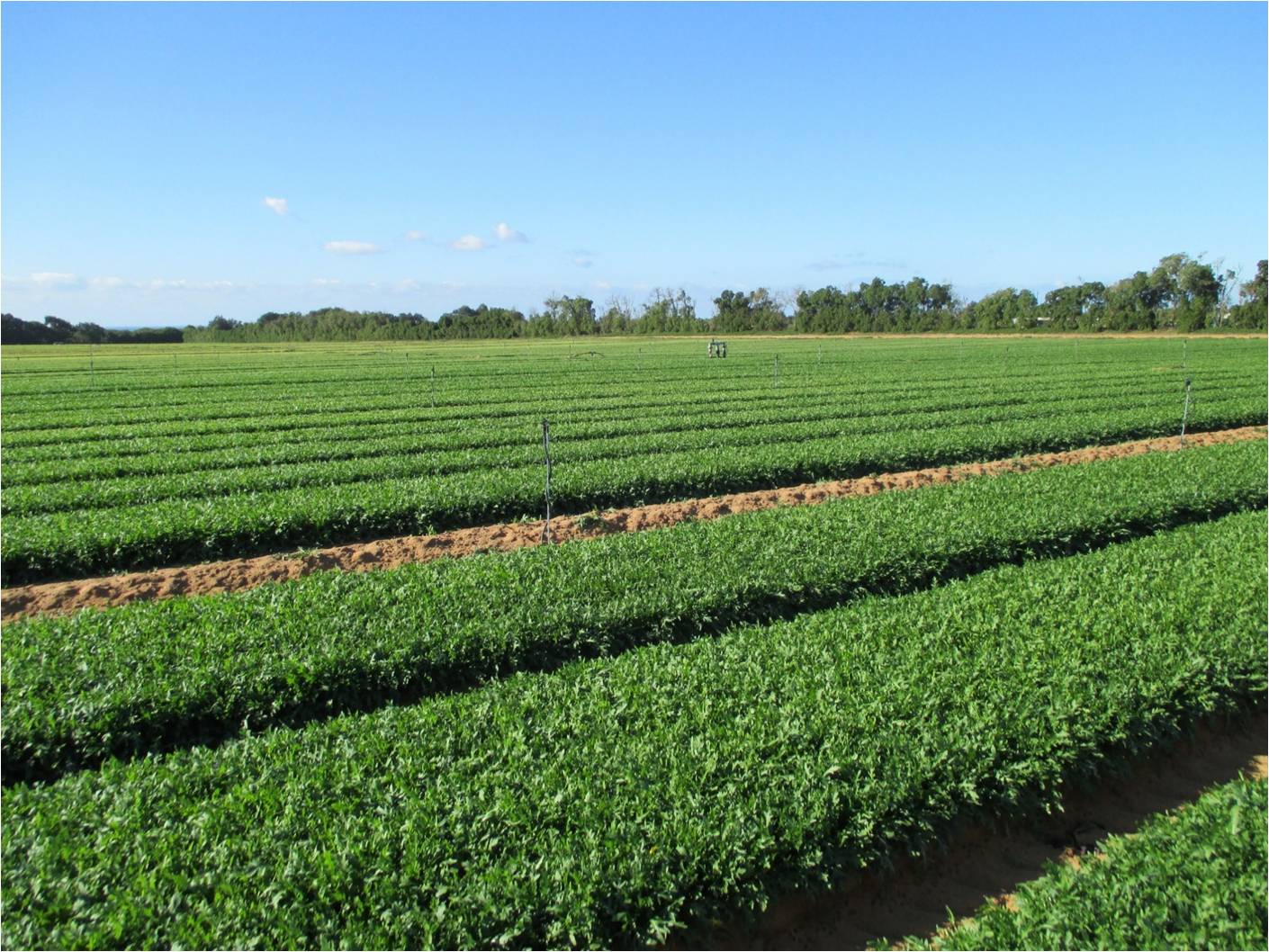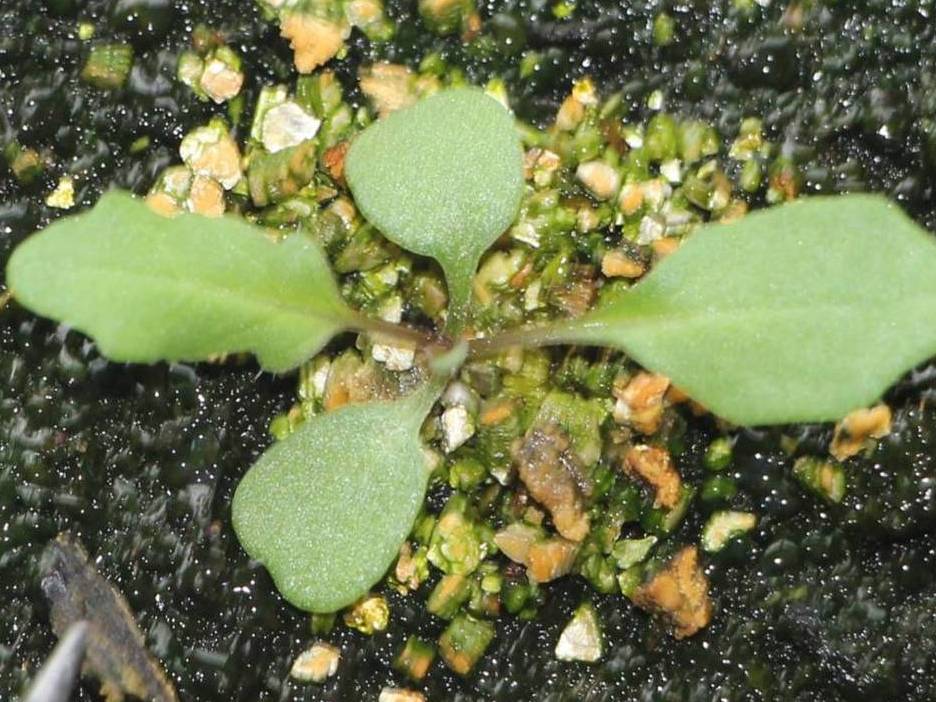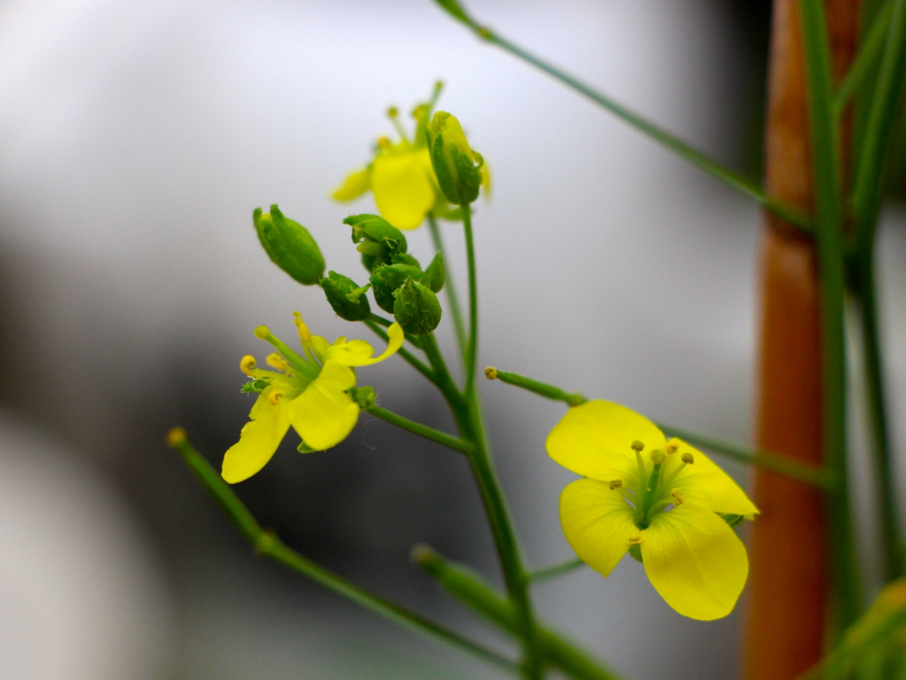 |
 |
 |
 |
The rocket crop
Rocket is a horticultural crop of baby leaf type from Brassicaceae family. Two main species are cultivated as rocket crops, the Diplotaxis tenuifolia (wild rocket) and Eruca sativa (cultivated rocket or arugula). The D. tenuifolia is the main produced rocket species in Europe, North America and Australia. Its particular deeply lobed feature made it very familiar. It is also possible that D. tenuifolia is the least wild of the two species even though the common name is wild rocket. The Diplotaxis species is more featured for commercial products and has been improved in breeding programs, therefore being more domesticated than the Eruca species.
Rocket is native from Mediterranean countries, as well as India, Pakistan, Cape Verde and Nepal. In Italy, several species of the genus Diplotaxis have been consumed as vegetables since ancient times. It has been used as raw material in salads, or cooked in many recipes. Rocket has also been used in traditional medicine for different purposes.
The increased demand for this crop is largely attributed to health benefits associated and also the popularity of the pre-packaging baby leaf salad, that requires innovative and high quality products. In the last decades, wild rocket has become very popular and widely cultivated. Its production as baby leaf crop steadily increased in the fresh-cut industry worldwide, including Portugal.
Cultivation and harvest
Rocket species have the ability to re-grow their leaves repeatedly after cutting, which allows for several harvests to take place under optimal conditions. Producers grow rocket in high densities to encourage upward growth and improve yields, making it easier the harvest. In southern Italy, up to 7 harvests may be obtained from a single planting, which has obvious cost-saving benefits for growers.
However, multiple harvests may also induce a stress response in rocket plants that may be detrimental to the flavour and aesthetics. Stress drives up the production of secondary metabolites such as glucosinolates, which will produce very strong, bitter tastes. This highlights a difference between consumers that may be indicative of underlying genotypes for taste perception and preference.
Other detrimental effects of multiple harvests include leaves becoming progressively smaller and more ‘skeletal’ in appearance with each cutting. The plants can become stressed through competition, and a high anthocyanin levels also affects the colour of leaves, causing an undesirable red-purple leaf discoloration. Colour has been found to be one of the most important characteristics that consumers look for in rocket, and so the loss of fresh appearance can ultimately lead to rejection of crops in supermarkets and processors.
The genus Diplotaxis and Eruca
The genus Diplotaxis and Eruca have subtle differences in terms of morphology, cultivation and phytochemical composition. One way of telling the genera and species apart is by scrutinizing the flower morphology, which growers and producers would probably never observe due to short cropping cycles.
A distinction should be made that both Diplotaxis and Eruca species have overlapping characteristics, and that one can be easily mistaken for the other one by the untrained eye, before a certain level of maturity has been reached. These species all have similar morphological characteristics, though E. sativa is by far the most diverse in this sense. Leaves range from large, rounded types that almost resemble lettuce or spinach, to small, ‘skeletal’ and serrated leaf types that are most commonly associated with D. tenuifolia.
In terms of growth habits, D. tenuifolia is much slower to establish and grow than E. sativa. The Diplotaxis species often taking between 36 to 99 days to reach harvestable size, depending on the season. E. sativa germinates and establishes much more rapidly than Diplotaxis species, usually taking between 26 to 68 days.
Phytochemical characteristics of rocket plants
Besides being low caloric, rocket plants present a high diversity of phytochemical components, such as high levels of vitamins A and C, minerals like calcium (Ca) and iron (Fe), folic acid and antioxidant compounds.
There is a great diversity in the perception of taste and preference among consumers, which should be taken into account when choosing the rocket variety. The leaves, unmistakable for their characteristic aroma and piquant flavour, result from the high content of flavonoids and glucosinolates that fundamentally underpins taste, flavour, and the consumer acceptance.
Typical rocket flavour and pungency are perceived as positive sensory traits by consumers, while bitter, and especially herbaceous notes, characterise the groups of less accepted varieties. The groups classified as unpleasant are characterised by a high glucosinolate content, with either sinigrin (strong perceived pungency, flavour and several other additional sensory notes), or sinalbin/gluconapin (strong herbaceous note, low flavour perceived) as the dominant components.
Glucosinolates are specific plant defence compounds produced by all members of the Brassicaceae family. Rocket species, unlike the other Brassicaceae vegetables, do not require cooking in order to be consumed by humans. One of the main drawbacks of cooking and consuming glucosinolates-rich plants is that the availability of the health-beneficial compounds is often significantly reduced depending on the duration of cooking and the temperature used, as myrosinase enzymes are usually denatured at high temperatures.
Breeding specifications in rocket
Breeders are continuously developing new rocket varieties that allow growers to achieve good field performance and high quality harvests. Rocket varieties should have sustainable agronomic practices and proper post-harvest characteristics, well suited to different climatic conditions and accompanying consumer preference.
Rocket crop should combine high vigour and yield with improved flavour (hot and peppery), high leaf uniformity and adequate thickness, an upright habit (erect plants to be easier to harvest), fast growth rate with high bolt tolerance (slow/reduced bolting plants are easier to grow), and an extended shelf life.
The seeds must be consistent, healthy and pure. Low rates of germination, early bolting and flowering are undesirable. Another important rocket improvement is the need of increased resistance to pests and diseases in the new varieties, namely resistance to downy mildew, especially in the two main spring and autumn production seasons.



